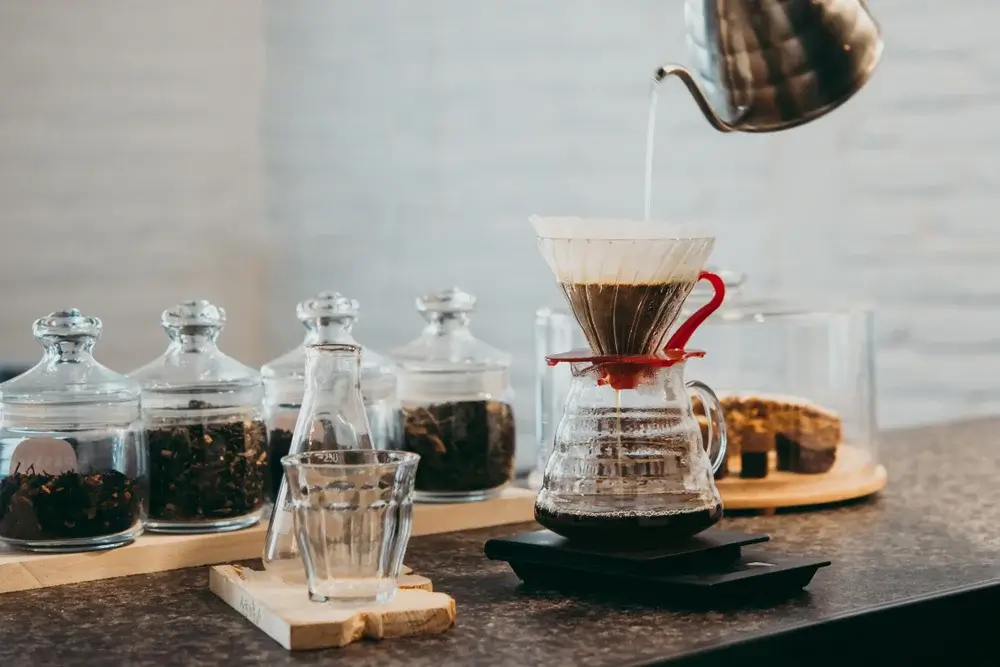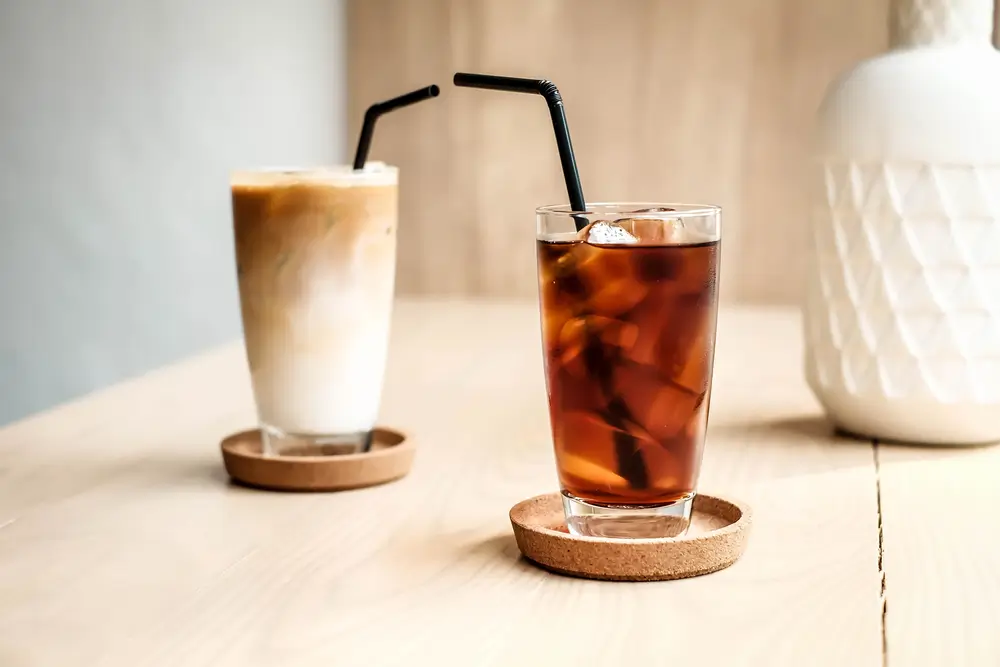Hey there, coffee enthusiasts! Ever found yourself wondering about the difference between a classic coffee and a delectable mocha? You’re not alone! Many of us start our days with these comforting brews, but what, really sets them apart? Let’s dive into the world of mocha and coffee, sip by sip!
Key Takeaways
- Coffee and mocha have rich, diverse origins and cultural significance.
- Key ingredients and brewing methods define their unique flavors.
- Coffee offers a range of bold to smooth flavors, while mocha is a sweeter, chocolate-infused option.
- Choices depend on personal taste, occasion, and preference for flavor intensity.
Mocha is a coffee drink combining espresso, steamed milk, and chocolate, often topped with whipped cream, while regular coffee is simply water-filtered through ground coffee beans, varying in flavor based on the beans and brewing method.
Origins and Cultural Significance
The journey of both mocha and coffee is as rich and varied as their flavors. Coffee’s roots can be traced back to ancient Ethiopia, where legend speaks of a goat herder named Kaldi who discovered the energizing effects of the coffee cherries. From there, it spread to the Arabian Peninsula, where it became an integral part of the culture. Coffee houses, known as qahveh khaneh, sprang up in cities across the Middle East and became hubs for social and political gatherings.
Mocha, on the other hand, doesn’t just refer to the modern coffee-chocolate drink. Its name originates from the port city of Mocha in Yemen, which was a major marketplace for coffee from the 15th to the 17th century. Coffee beans exported from Mocha were renowned for their distinctive flavor, and the term “mocha” was originally used to describe these high-quality beans. The contemporary mocha drink, blending coffee with chocolate, is a relatively modern creation that combines the historic appreciation for coffee with the widespread love of chocolate.
In comparison, the cultural imprint of the mocha as a drink is more contemporary and less steeped in ritual. It embodies a more modern café culture that values variety and innovation in flavors. The fusion of coffee and chocolate in a mocha represents a blend of traditions and tastes, a symbol of the ever-evolving palate of the coffee-drinking community.
Key Ingredients and Brewing Methods
The essence of both mocha and traditional coffee lies in their key ingredients and the methods used to brew them. Understanding these elements is crucial to appreciating the differences between these two popular beverages.
Traditional Coffee: The primary ingredient of coffee is, of course, the coffee bean. These beans are the seeds of the Coffea plant, and they undergo various processes including roasting, grinding, and brewing. The brewing method plays a significant role in the final taste of the coffee. Methods range from the quick and intense espresso shot, typical in Italian culture, to the more leisurely drip coffee, popular in American kitchens. Each method extracts flavors from the coffee grounds differently, affecting the body, acidity, and overall taste profile of the drink.

Mocha: A mocha starts with a base of espresso, just like many other popular coffeehouse drinks. To this, chocolate is added, typically in the form of syrup or cocoa powder. The type and amount of chocolate can vary greatly, allowing for a range of flavors from sweet and mild to rich and intense. The final key ingredient is steamed milk, which adds a creamy texture and balances the bitterness of the espresso and the sweetness of the chocolate. Some variations also include a topping of whipped cream or a sprinkle of cocoa powder for an extra indulgent touch.
The brewing methods for coffee can range from simple to sophisticated, with equipment like French presses, AeroPress, and sophisticated espresso machines. In contrast, preparing a mocha typically involves an espresso machine to not only brew the coffee but also steam the milk to the perfect temperature and texture.
Flavor Profiles and Variations
When comparing mocha and coffee, one of the most distinct aspects to consider is their flavor profiles. Both beverages offer a range of tastes, but their core components set them apart in significant ways.
Coffee Flavor Profile
The flavor of traditional coffee is influenced by several factors including the type of coffee bean, the roasting process, and the brewing method. Coffee flavors can range from bitter and bold to smooth and acidic. The origin of the beans also plays a role – African beans often have floral or fruity notes, while South American beans might offer a nutty or chocolaty flavor. The roasting level, from light to dark, determines the intensity and bitterness of the brew. Finally, the brewing method affects the body and richness of the coffee, with methods like espresso yielding a dense, rich cup, and drip coffee producing a lighter, more subtle flavor.
Mocha Flavor Profile
The hallmark of a mocha is its combination of coffee and chocolate flavors. This blend creates a beverage that is richer and sweeter than traditional coffee. The type of chocolate used can greatly influence the taste – dark chocolate creates a more bitter, intense mocha, while milk chocolate results in a smoother, sweeter drink. The addition of steamed milk softens the bitterness of the espresso, adding a creamy texture and slight sweetness. Variations of the mocha might include different syrups, spices like cinnamon or nutmeg, or even flavored whipped creams to add further complexity and depth to the flavor.
In terms of variations, coffee offers a multitude of forms – from black to lattes, cappuccinos to Americanos, each offering a different taste experience. Mocha, too, has its variations, with some cafes offering options like white chocolate mochas or peppermint mochas, catering to a wide range of palates.
Choosing Your Ideal Brew
With a better understanding of the differences between mocha and coffee, the final step is choosing the right brew for you. This choice can depend on various factors, including personal taste preferences, the time of day, and even the occasion.
For the Coffee Purist
If you prefer a strong, robust flavor that highlights the natural characteristics of the coffee bean, traditional coffee might be your ideal choice. Black coffee, be it an espresso or an Americano, offers a pure, unadulterated coffee experience. For those who enjoy subtler flavors, a latte or cappuccino with just a touch of milk can provide a smoother, creamier taste while still retaining the coffee’s essence.
For the Flavor Adventurer
If you enjoy sweet, rich flavors and are open to experimenting, a mocha is an excellent choice. It’s perfect for those moments when you desire something more indulgent than a standard coffee. The chocolate in a mocha not only adds sweetness but also complements the coffee’s natural bitterness, creating a harmonious blend. Mochas are especially enjoyable in the colder months or as a special treat.
Ultimately, the choice between mocha and coffee comes down to personal preference. Experimenting with different types, flavors, and pairings can help you discover what you enjoy the most. Whether it’s the rich, bold taste of a black coffee or the sweet, comforting blend of mocha, each has its unique appeal, ready to be savored and enjoyed.
Closing Thoughts
Whether you’re a mocha maven or a coffee connoisseur, there’s so much joy in exploring the world of coffee. Here’s to many more delicious discoveries – one cup at a time!
So, are you Team Mocha or Team Coffee? Or maybe a bit of both depending on the day? Share your stories and preferences in the comments below – let’s make this a lively coffee-loving community!
Stay tuned for more coffee brewing guides, recipes, and bean roasts.
FAQs
How does the flavor profile vary?
Mocha offers a sweet, chocolatey taste, blending the robust flavor of coffee with the richness of chocolate. Regular coffee has a more versatile flavor profile, ranging from bold and robust to smooth and mild, depending on the bean type and roast.
Is there a difference in caffeine content?
The caffeine content in mocha and regular coffee is generally similar. However, it can vary based on the amount of espresso or coffee used and the brewing method.
Can I make these drinks at home?
Yes, both mocha and coffee can be easily made at home. Mocha requires espresso or strong coffee, chocolate (syrup or powder), and steamed milk, optionally topped with whipped cream. Regular coffee can be made using various brewing methods like a French press, drip, or espresso machine, with your choice of coffee beans.


